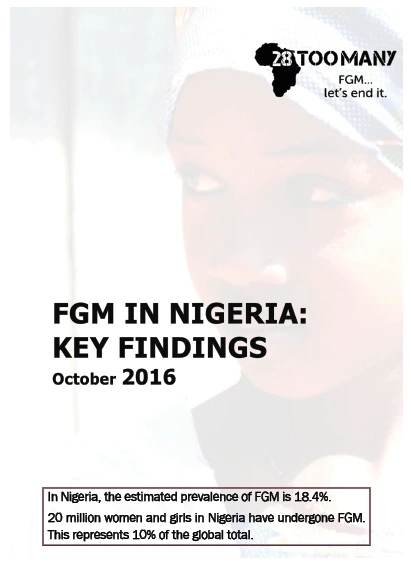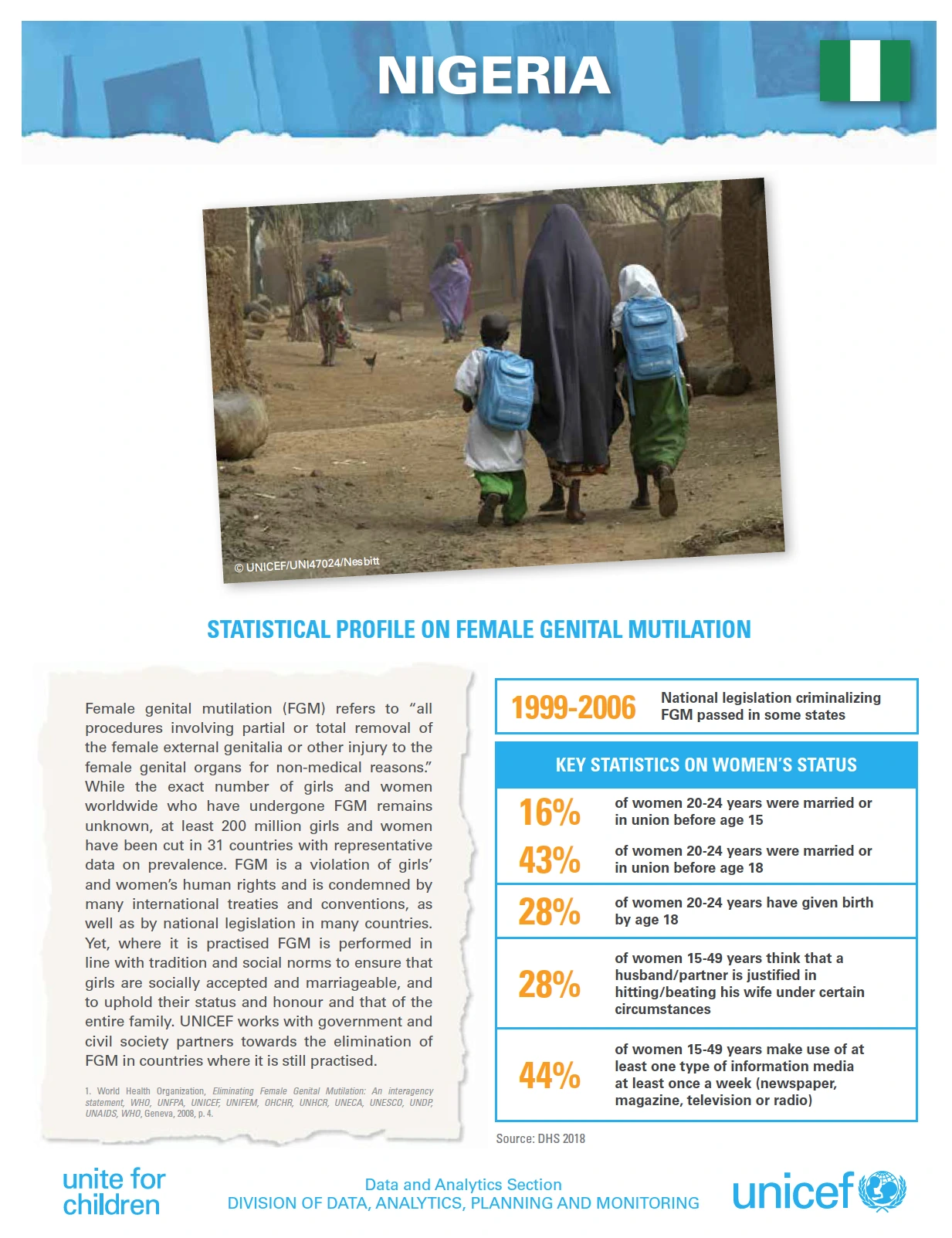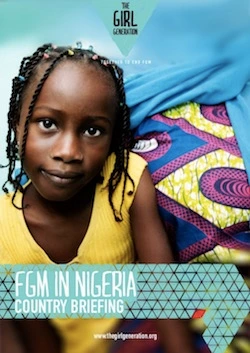Home | Research & Resources | Nigeria
Key Findings
The prevalence of FGM/C among women aged 15–49 in Nigeria is 19.5%.
The states where the most women are affected by or are at risk of FGM/C
are not necessarily those with the highest prevalence.
Geography
The highest prevalences are in South East and South West Zones
Age
The mean age of cutting decreased from 3.1 years in 1999 to 1.7 years in 2018
Type
‘Cut, flesh removed’ is the most common type of FGM/C
Agent
Traditional cutters primarily carry out FGM/C (on 92.8% of girls aged 0–14)
Distribution of FGM/C across Nigeria
The Zones in Nigeria with the highest FGM/C prevalence are South East (32.0% of women aged 15–49) and South West (30.0%). The highest state prevalence is in Imo State, at 61.7%. It should be noted that the data for some regions is based on relatively small numbers of women. When population numbers are used, however, the priority states change from those with the highest percentages (Imo, Ekiti, Ebonyi, Kaduna, Kwara and Osun) to those with the highest numbers of affected girls/women – Lagos, Kaduna, Imo, Kano and Oyo.
The majority of Nigeria’s population (more than 50%) lives in rural areas. Historically, FGM/C in Nigeria has been more likely to occur in rural areas, but in Nigeria 24.2% of women aged 15–49 and living in urban areas have undergone FGM/C, compared with 15.6% living in rural areas. However, in recent years this appears to be changing: 16.3% of daughters aged 0–14 living in urban areas have experienced FGM/C, compared to 21.1% of those living in rural areas.
All ethnic groups practise FGM/C, although it is almost unheard of among the Tiv. The group with the highest prevalence is the Yoruba (34.7% of women aged 15–49).
FGM prevalence is highest among Catholic women (24.5% of women aged 15–49) and lowest among Traditionalist women (11.9%, although this figure is based on a very small sample of women).
In most African countries, a mother’s level of education is a determining factor in whether her daughters will be cut. The usual expectation is that a higher level of education is linked to a lower likelihood of FGM/C. However, Nigerian women aged 15–49 with no formal education are the least likely to have undergone FGM/C (17.2%). Prevalence is highest (25.6%) among women with a primary-level education, but the gap in prevalence between women with higher levels of education and lower levels of education is closing.
A similar situation is noted in relation to women’s economic statuses. About 20% of women in Nigeria (aged 15–49) in the higher wealth quintiles have undergone FGM/C, compared with 16.4% in the lowest quintile. Conversely, 9.8% of girls aged 0–14 and born to mothers in the wealthiest quintile have undergone FGM/C, compared with 26.6% in the lowest quintile. This indicates that, whereas wealthier, better-educated women aged 15–49 are more likely to have undergone FGM/C than poorer, less-educated women in the same age-range, girls born to wealthier and better-educated women in Nigeria today are less likely to be cut than girls born to poorer, less-educated women.
Trends in FGM/C Prevalence in Nigeria
Between 2008 and 2018, the overall prevalence for women aged 15–49 fell from 29.6% to 19.5%. Due to the large age-range of women included, however, the overall prevalence alone may not fully reflect the progress that has been made in recent years. Breaking down the most recent data by age group shows that the prevalence for women aged 45–49 is 31.0%, while for the youngest age group this has fallen to 13.7%. Despite the fact that a small proportion of women may be cut after the age of 15, the data demonstrates a clear trend towards lower prevalences among younger women.
FGM/C Legislation in Nigeria
In May 2015, a federal law was passed in Nigeria banning FGM/C and other harmful practices, but this Violence Against Persons (Prohibition) Act only applies to the Federal Capital Territory of Abuja. It is up to each of the 37 states and territories to pass similar legislation. 32 have passed it; however, there remains an inconsistency between the passing and enforcement of laws.
Development Indicators
Population Growth
215,958,133 (as at 30 March 2022), with a 2.67% growth rate (2022 est.)
Under-Five Mortality
75.7 deaths per 1,000 live births (2020)
Maternal Mortality
917 deaths per 100,000 live births (2020)
SDG Gender Index
Ranked 130 out of 144 countries with a score of 48.4% (2022)


.webp)
.webp)
.webp)
.webp)
_cover.webp)
.webp)
.webp)

_cover.webp)

